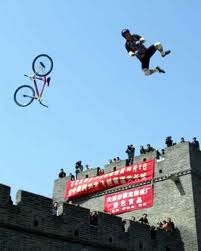Supermarkets, Maslow, Extreme Sports (Part 2)

 Let’s face it, most of today’s crisis management programs are about playing defense. They’re about survival. While it’s perfectly logical on one level, there’s a case to be made that we’re selling short the true impact the crisis management discipline can have on an organization. Most crisis programs stop just when it starts to get interesting – just before they could be a proactive, positive force for the brand of any company.
Let’s face it, most of today’s crisis management programs are about playing defense. They’re about survival. While it’s perfectly logical on one level, there’s a case to be made that we’re selling short the true impact the crisis management discipline can have on an organization. Most crisis programs stop just when it starts to get interesting – just before they could be a proactive, positive force for the brand of any company.
What if crisis management wasn’t just about playing defense?
What if we harnessed this effective discipline and didn’t stop at the point of being prepared in case of a crisis, but actually worked to convert weaknesses into competitive weapons.
What if we said crisis management is about playing to win – not playing to keep from losing?
The issue for our CEO wasn’t just how did the network beat him to the punch? The real question was, why wasn’t the senior management team, knowing there was a problem, working toward industry leadership in pricing accuracy? Especially given its brand position. (To read Part 1, click here!)
Maslow’s hierarchy of needs theory may provide insight toward a strategy for companies in the future.
When Abraham Maslow developed the hierarchy of needs theory, his premise was simple: Take care of a human’s most basic physiological needs such as air, water and food. Then after those needs are met, aspire to meeting other needs, in this order: safety, love (acceptance), esteem, and self-actualization. There isn’t a graduate business program worth its salt that doesn’t touch on his work.
Interestingly enough, you don’t have to study Maslow in the classroom to experience his work both inside and outside of business. For example, we don’t have to look any further than the many extreme sports we see on television such as cliff diving, skateboarding, motorcycle jumping, etc. Whenever I watch these high flying acts, I’m always asking myself questions like: How does someone learn how to do that? How do you practice that without suffering severe injury or even death?
If one were to imagine what the hierarchy of needs would be for someone trying to master a dangerous sport and compete on the world stage, it might read this way:
- •Survive
- •Don’t get hurt too often
- •Never get hurt
- •Improve form
- •Perfect form
- •Be the best
While perfecting form and becoming the world’s best doesn’t totally protect the athlete from getting hurt or killed, it certainly helps. What’s more, extreme sport athletes who stop trying to perfect their skills after the “never get hurt stage,” may never get hurt, but they’ll never make any money at the sport either.
Crisis Management Translation
Keeping Malsow in mind, our approach to crisis management would look like this:
- •Respond to the crisis
- •Communicate response to the crisis
- •Avoid crisis
- •Advance the brand by reprioritizing
- •Develop strategies to seek competitive advantage
- •Build a world class advantage
In Part 3, we’ll talk about how to use a (crisis) protocol you’ve likely only thought about in terms of surviving and leveraging it to create a new standard of excellence for whatever you choose to do.
*Photo: seekextreme.com
Category: Business Growth & Strategy
Tags: Communication, crisis, Maslow, small buisness

